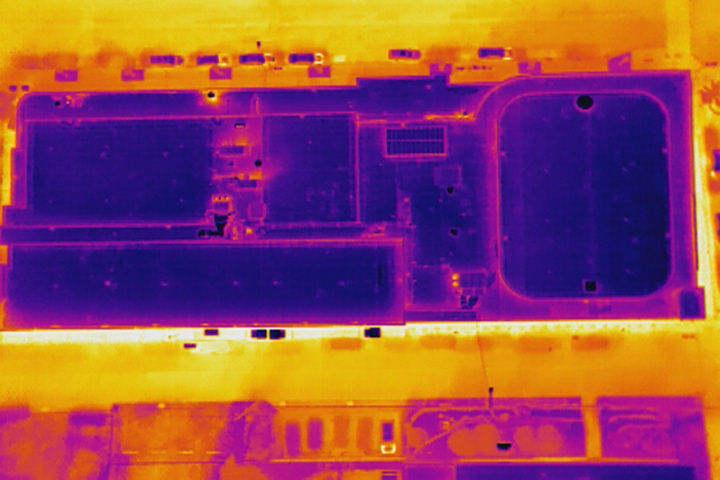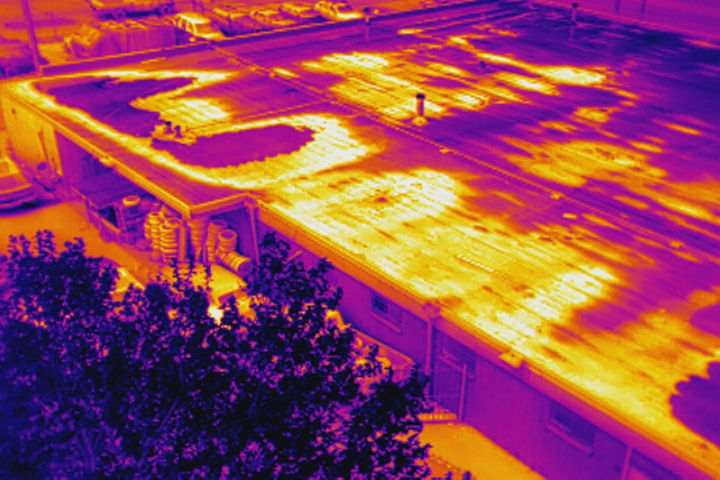Case Study: Drone Technology + Infrared Cameras
- nexusbec
- Jun 28, 2018
- 5 min read
Improving Building Roof Inspections
As a leader in building envelope inspection and testing, NEXUS' drone capabilities set them apart. With very few companies offering these capabilities, NEXUS is able to provide their clients with the highest quality IR images, which pinpoint deficiencies, and help inform recommended repairs.
Moisture intrusion can be a building owner’s worst nightmare. Moisture damage is unsightly, unhealthy and can cause serious structural damage to a building. Building scientists nationwide have used infrared (IR) cameras to identify areas of potential water damage, but Tacoma-based NEXUS, a third-party building envelope consulting, testing and forensics firm, is refining the process by pioneering the latest approach to capture the most useful IR images. They have paired a nimble and versatile drone with an IR camera to provide their clients with higher quality and more accurate thermal images of larger, harder to access areas with a specific focus on a building’s roof. Their drone team includes four Certified Infrared Thermographers, two of which are FAA-certified sUAS (drone) pilots.
How does this work?
Utilizing the latest drone and IR technology, NEXUS employs their DJI Matrice or the DJI Inspire outfitted with a DJI Zenmuse XT Radiometric High Resolution Powered by FLIR 640x512 to capture exceptional high-quality IR images. Both drones offer a self-stabilizing feature, which is especially helpful in providing clear, stable images in windy conditions, as well as an auto return feature that returns the drone to the landing area when the battery is low. Each are also equipped with an obstacle avoidance system that ensures the drone won’t collide with the building’s façade or a neighboring tree.
Prior to the use of drones, building envelope consultants would use a helicopter, or would walk often unsafe, deteriorated roofs to capture the images that take a drone a fraction of the time to do. Thanks to the convenience and accessibility of drones, a costly helicopter rental or dangerous walk on an unsafe roof are quickly becoming a thing of the past.
Do you really need a drone?
Recently, the Port of Tacoma put our drone to work to identify areas of moisture intrusion on a nearly 400,000-sf roof. Over the last several years, maintenance staff identified areas of the roof too dangerous to access. These red-tagged areas hadn’t been seen by building maintenance staff in years. By using our drone, we were able to provide the Port with a comprehensive overview of the roof of this facility, along with detailed images of problematic, dangerous areas. Our drone was able to access the damaged areas safely and efficiently, allowing our team to review the images immediately, and take additional images as necessary. Without our drone, we would have had to rent a lift, and spend several days performing the inspection with no guarantee we would have been able to reach areas near the center of the building.
When using a helicopter, you are often restricted by the amount of time you have with the pilot. Additionally, our drones are able to get much closer to the building and into areas inaccessible to a helicopter, producing far superior images, and better informing recommended repairs.
Serving as a Client Advocate
As a consultant, it is our responsibility to keep our client’s best interests at the forefront of all our efforts. While performing a building envelope inspection as part of a building renovation for a client in Redmond, Wash., our visual inspection of the roof revealed areas of deterioration and suspected water intrusion that needed to be evaluated with thermal imaging. The client was aware the roof was deficient but not clear on the extent, and as we discussed our concerns we explained that the thermal images would help accurately pinpoint deficiencies in the roof membrane, allowing them to repair the failing areas of the roof with greater results. Our images revealed far greater moisture intrusion than our client had initially thought. As a method of repair, they had planned on applying a fluid coating on the roof to extend the life of the roof, but after seeing our IR images, they reconsidered this repair. If they had, not only would the coating not seal properly, it would have trapped existing moisture and caused further damage. Rather than attempting a Band-Aid repair, the client took the information from our assessment to help prioritize future capital improvements, and avoided a more costly repair.
Avoiding the Invasive Evaluation
The Tom Taylor YMCA in Gig Harbor, Wash. is a nearly 75,000-sf facility that includes a very large natatorium. Unfortunately, the facility was experiencing damage due to moisture issues, specifically within the exterior envelope, due to humidity migration from the natatorium. The YMCA hired NEXUS to perform a series of invasive investigations, which required us to cut out pieces of interior and exterior walls to view the moisture damage. Knowing this was not going to yield all of the results our client needed, we encouraged the YMCA to allow us to use our infrared capabilities to further investigate the moisture intrusion on the roof. The initial IR images were encouraging, as they revealed less moisture intrusion than originally expected and we were able to assess the remainder of the building for similar issues, providing the client peace of mind knowing the moisture migration was isolated.
As we assessed the facility’s roof, our drone allowed us to get our camera closer to the roof, and identify issues with much greater detail than if we had to perform this assessment only from the roof-top. Furthermore, because the images can be viewed real-time, areas identified as suspect during the initial overview flight can then be flown over as many times as needed during the same assessment to secure the best image to identify the issues.
Commitment to the Best
Our team is the first to admit that a helicopter ride is pretty fun, but when it comes to providing our clients with the most accurate and technically sound information, NEXUS is committed to integrating the best technology possible. Moisture intrusion can cause our clients great headache, but with the use of drone and infrared technology, we can quickly pinpoint areas of concern, and recommend necessary improvements, in a high-quality yet cost-effective and efficient manner.
The first two images below are of the YMCA building in downtown Tacoma

An example of the rudimentary detail achieved when viewing a building from the same distance as a helicopter.

IR images of the building taken from our drone. This closer view provided us with far superior images that helped us to provide more detailed recommendations for repair.

A large commercial building with significant water intrusion issues on the roof, located in downtown Tacoma.
![endif]--![endif]--![endif]--




















